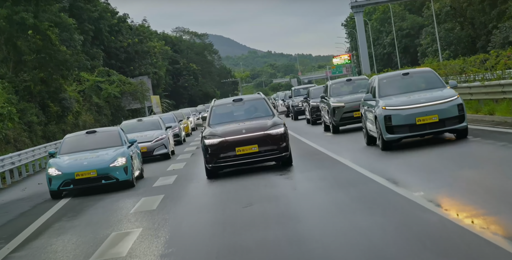The issue with the media is they’re constantly trying to paint the best chance we’ve ever had at FSD, Tesla, as shit. They ignore that Tesla is the safest SD car, and >50 times safer than humans in the USA. Anyway, there’s another issue with this test: They all take place in infrastructure designed for human control, to facilitate a transition period. The only way FSD will be actually flawless is in infrastructure designed for machine control. Yellow lines depicting the edge of the lane, for example, are deemed the most vibrant, optimal solution for optical vision, the sensors best suited for humans. But what about sensors best suited for the cars? LiDAR/radar/ultrasonic sensors are great at 3D mapping, but what about flat surfaces? Highways need to be optimised for machine, just like we converted roads from foot to horse to car, building better barriers and separate footpaths and bridges and tunnels. Until then self-driving will always be on the back foot. And yet, despite the disadvantage, they’re significantly safer.
Tesla is not self-driving, just SAE level 2. Mercedes is actually level 3.
Tesla wants to do it without LiDAR which seems hopeless to me.
Not sure about the “50 times safer” claim but a common mistake: Sober humans are much better drivers than humans in general (including drugged ones). Something like 100 times if I remember it correctly.
Very good point, no doubt the vast majority of human error comes from not being vigilant, usually from being intoxicated.
I just met with a taxi driver in England who has owned a Tesla for a few years - he feels like the level of assistance with Tesla is practically useless on British, and by extension, European streets. Combine its poor cruising performance on thinner lanes and diverse types of corners with its trigger-happy e-braking for objects and people nearby, and you have a car which actually causes more dangers in urban environments. It really helped me see that while it’s advanced, it’s not really that advanced compared to, say, basic cruise control (match speed, braking, no route following or turning junctions/corners) that some EU cars have been fitted with for nearly two decades now. (Sober) humans are still safer when making choices like object avoidance and turning.
You mean the Mercedes which failed all of th se tests?
Mercedes is an insurance product more than a tech product. They found an underwriter and a very rigid set of circumstances to insure hands off driving.
I keep seeing this posted about Mercedes, am I missing something? I test drove an EQS sedan and it basically just stayed in its lane. I have a Tesla with FSD and it drives me home. Point A to point B. Is there another setting the Mercedes needs to have turned on or something?
Used EQS prices dropped like an anvil and it would be great to not drive a fascwagon
Mercedes calls it „Drive Pilot“. Did your EQS have that?
TBH, I don’t know. Perhaps not, or maybe it needed to be enabled or selected. Is it capable of point A to point B driving?
I’m watching for the Zeekr 7X arrival in the South Pacific with interest. Now I’ll also be watching to see how they respond to tests like this.




